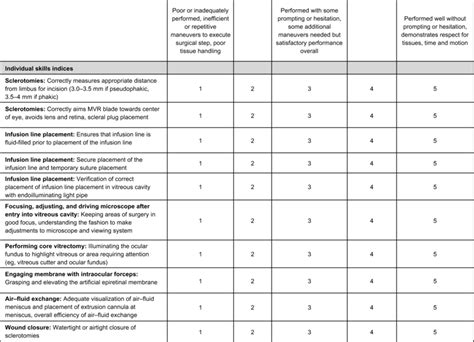Introduction

The 5-point scale grading system is a widely adopted evaluation method used to assess student performance in various educational settings. This system assigns numerical values (usually ranging from 1 to 5) to represent different levels of achievement or proficiency.
Benefits of the 5-Point Scale Grading System
-
Simple and Easy to Understand: The 5-point scale is straightforward and accessible to both students and educators, facilitating clear communication of expectations and feedback.
-
Versatile and Adaptable: The system can be customized to fit different educational contexts, including subjects, grade levels, and assessment formats.
-
Provides a Clear Grading Structure: The numerical values provide a quantifiable representation of student progress, allowing for easy comparison and tracking of performance over time.
Limitations of the 5-Point Scale Grading System
-
Can Oversimplify Learning Outcomes: The 5-point scale may not fully capture the nuances of student learning, and it can lead to an oversimplification of complex academic concepts.
-
Potential for Bias and Subjectivity: The system relies on subjective judgments, which can introduce biases or inconsistencies in grading, particularly when used without clear assessment criteria.
-
May Not Adequately Differentiate Student Performance: The 5-point scale may not provide enough granularity to differentiate between students with similar levels of proficiency, especially in high-stakes assessments.
Variations of the 5-Point Scale Grading System
-
Weighted 5-Point Scale: Each point value is assigned a different weight, with higher values indicating more significant contributions or achievements.
-
Plus/Minus 5-Point Scale: Half-point values are added to provide more differentiation within the 5-point scale.
-
Rubric-Based 5-Point Scale: Criteria and descriptors are defined for each point value to ensure consistency and transparency in grading.
Research on the 5-Point Scale Grading System
According to a study published in the journal “Educational Assessment,” the 5-point scale grading system:
- Has been shown to improve student motivation and engagement when used in conjunction with clear expectations and timely feedback.
- Is most effective when combined with other forms of assessment, such as written comments and rubrics, to provide comprehensive feedback.
- May lead to more lenient grading practices compared to other grading systems, resulting in potentially inflated student grades.
Innovative Applications of the 5-Point Scale Grading System
Educators are exploring creative ways to extend the use of the 5-point scale grading system beyond traditional assessment contexts. Examples include:
-
Self-Assessment and Goal Setting: Students can use the 5-point scale to self-assess their understanding of concepts and set goals for improvement.
-
Peer Feedback and Collaboration: Students can provide feedback to their peers using the 5-point scale, fostering constructive criticism and collaborative learning.
-
Project-Based Assessment: The 5-point scale can be used to evaluate the overall quality and completeness of student projects, including research, presentations, and performances.
Tips and Tricks for Effective Use of the 5-Point Scale Grading System
-
Define Clear Assessment Criteria: Establish specific expectations and criteria for each point value to ensure consistency in grading.
-
Provide Regular and Specific Feedback: Offer timely and detailed feedback to students, explaining the rationale behind the assigned grade and suggesting areas for improvement.
-
Use a Variety of Assessment Methods: Utilize a combination of assessments, such as tests, quizzes, projects, and presentations, to provide a comprehensive evaluation of student learning.
-
Calibrate Grading Practices: Regularly review and adjust grading practices to ensure fairness and consistency, and consider using anonymous grading to reduce bias.
Conclusion
The 5-point scale grading system offers a simple and versatile way to assess student performance. While it has limitations, it can be enhanced through thoughtful implementation and the incorporation of additional assessment methods. By embracing innovative applications and best practices, educators can harness the power of the 5-point scale grading system to support student learning and growth.
